If you’re learning how to cook for the first time, you’re not alone. When you first dive into cooking and trying to follow a recipe, it can seem like a foreign language. Cutting vegetables the right size and shape does make a difference in recipes, so it’s important to know the difference between how to slice, dice, and mince different vegetables. Hopefully with a little instruction and practice, you’ll get comfortable with these techniques and be able to tackle any recipe!
This post includes affiliate links to products we use and love!
Knife Skills: Slice, Dice, and Mince
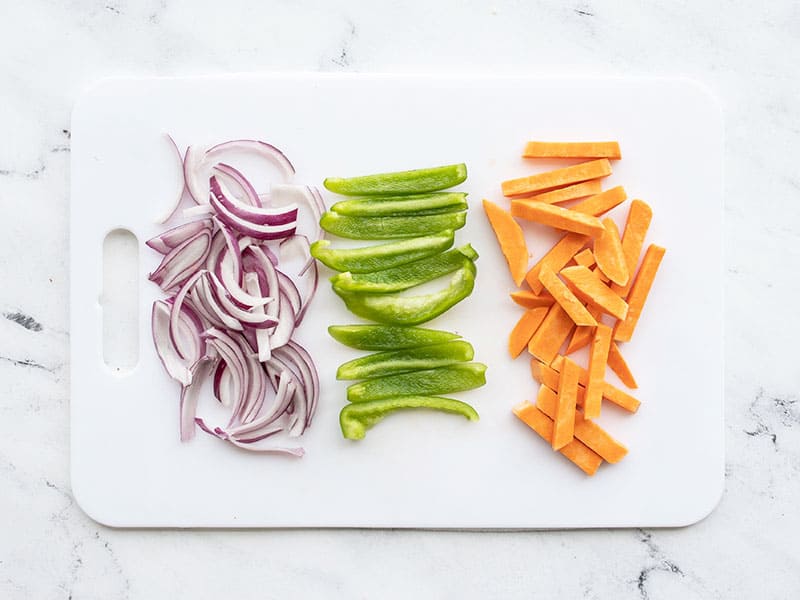
How to Chop the “Right” Way
There are many ways to cut an onion (or bell pepper, or sweet potato…) and I’m presenting the technique that works for me. This is not the only way and is not the “right” way, because I think the right way is unique to the individual. The more you use your knife, the more you’ll become comfortable and find a technique that works for you.
I’ve included photos and video for three different types of vegetables, so you can see how the basic technique translates to different shapes. This way you’ll know how to tackle anything from an eggplant to a rutabaga!
Tips Before You Begin:
- Use a sharp knife. Dull knives are more likely to slip, which can result in a knife accident (not fun). So invest in a simple knife sharpener to keep dull blades at bay.
- If your cutting board tends to slide on your work surface, lay a thin damp rag on the work surface under your cutting board. This will help lock your cutting board into place.
- Use the correct type of knife. For slicing, dicing, mincing, and chopping you will want to use a chef’s knife. This knife is big enough to easily slice through vegetables, but small enough to maintain a high level of control in your hand. Depending on the size of your hands, you’ll want either an 8″ or 10″ chef’s knife. I’m using a Victorinox 8″ Chef’s Knife.
Need more help getting started in the kitchen? Check out my 10 Tips for Recipe Success!
How to Cut an Onion
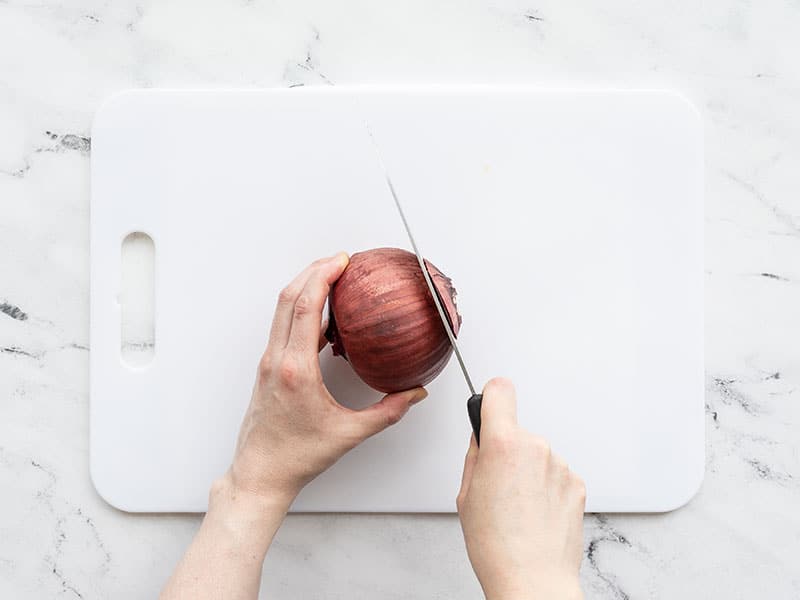
Step 1: Slice off the end(s) of the onion. Some people prefer to leave one end intact, to hold the onion pieces together as they slice (this can help, especially if you are a beginner), but I usually slice both off.
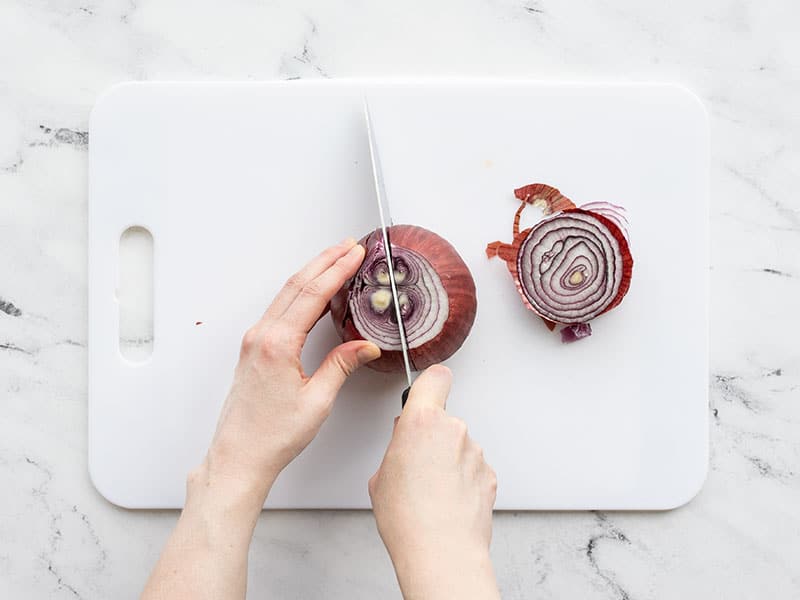
Step 2: Turn the onion to sit securely on one of the flat cut ends, then slice the onion in half. Now that there are several cut edges, it should be easy to peel the papery layers off the onion.
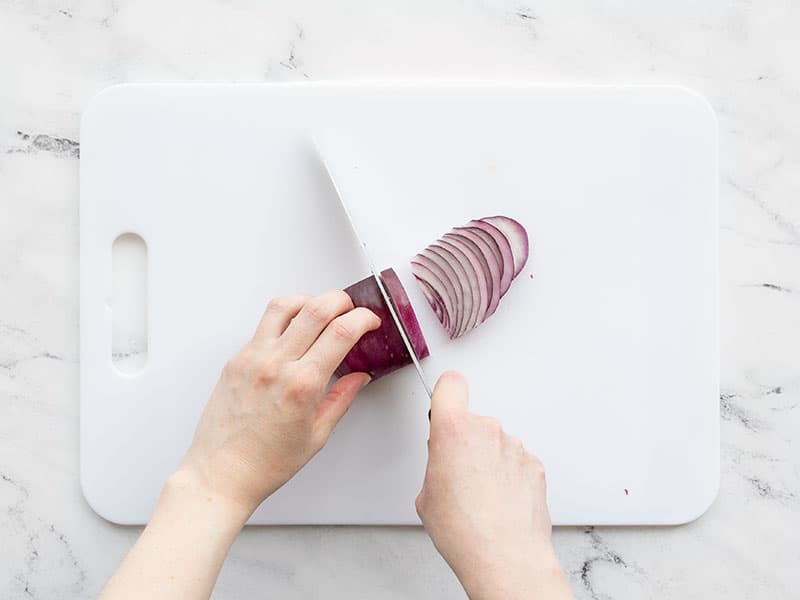
Step 3: Turn the onion to lay on one of the larger flat cut sides, then slice into strips. Make sure to keep your finger tips tucked as you slice to protect your fingers. Some people prefer to slice along the latitude of the onion, I prefer to make a longitudinal slice. Cutting in this direction makes straighter slices, whereas slicing the other direction makes half-round slices. You can choose the direction based on the recipe or how you want the onion slices to look.
How to Use Sliced Onions: Sliced onions are great for recipes where you want the onion pieces to stand out. They’re great for roasting (Roasted Bratwurst with Peppers and Onions), sautéing (Fried Cabbage with Noodles), pickling (Pickled Red Onions), and caramelizing (Pineapple Pork Hawaiian Burgers).
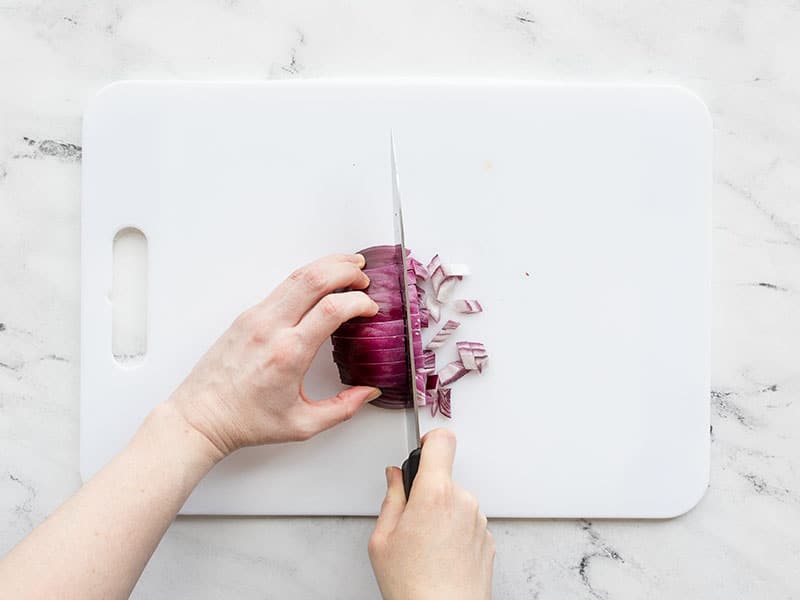
Step 4: To dice the onion, line up the slices, turn 90 degrees, and cut across the slices. This is where it can help to leave one end of the onion intact to hold the slices in place, but I just hold them in place with my hand.
How to Use Diced Onions: Diced onions are good to use in recipes where you may want some texture, but not large pieces. Use them for sautéing (Turkey Taco Skillet), in soups and chilis (Chicken and Lime Soup), and Salads (Honey Mustard Broccoli Salad).
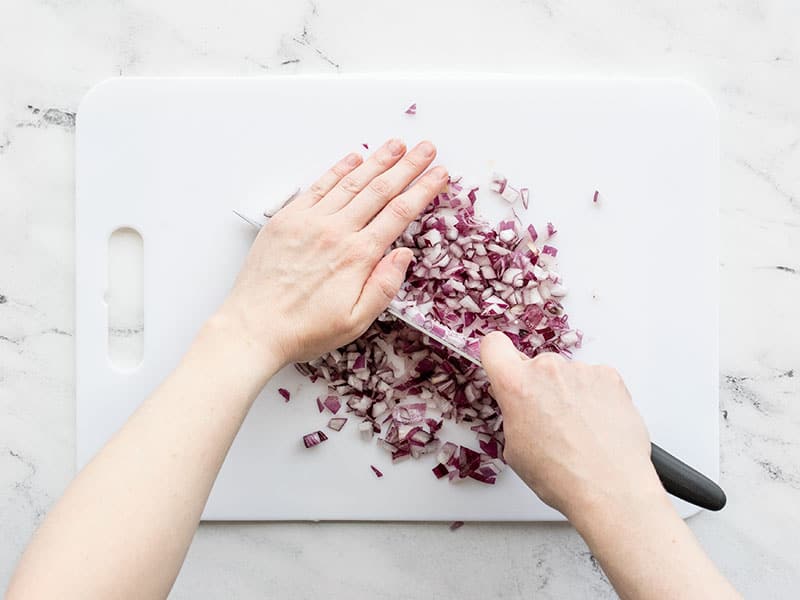
Step 5: To mince the onion, place one hand over the tip end of the knife to create a fulcrum, and rock the knife back and forth with the other hand to further chop the diced onion into smaller pieces (see video above to watch this in action).
How to Use Minced Onion: Minced onions are great for recipes where you want some onion flavor, but you don’t want much, if any, texture. Mince onions tend to melt into any dish they’re cooked into, and often have an undetectable texture. Use minced onions in: meatballs (Beef Kofta Meatballs), burgers (Greek Turkey Burgers), meatloaf (Cheeseburger Meatloaf), and salsas (Easy Pineapple Salsa).
How to Cut a Bell Pepper
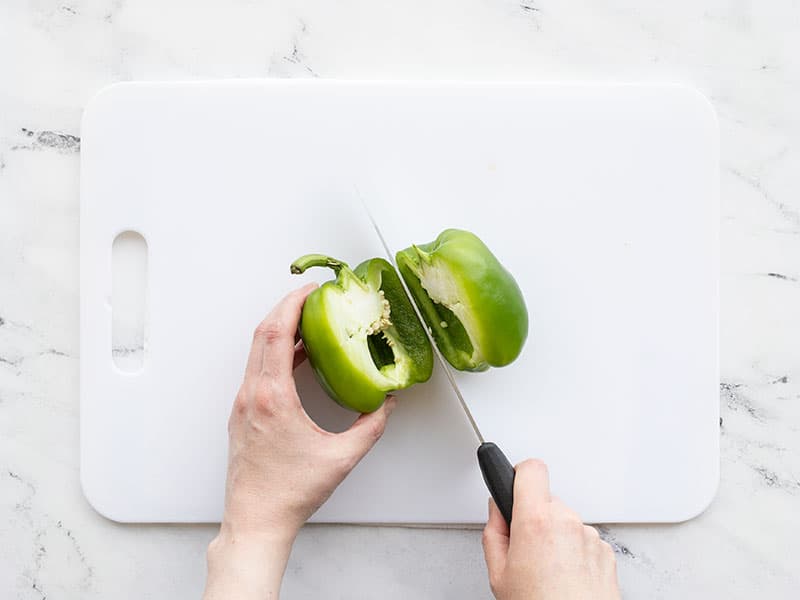
Step 1: Slice the bell pepper in half longitudinally (top to bottom).
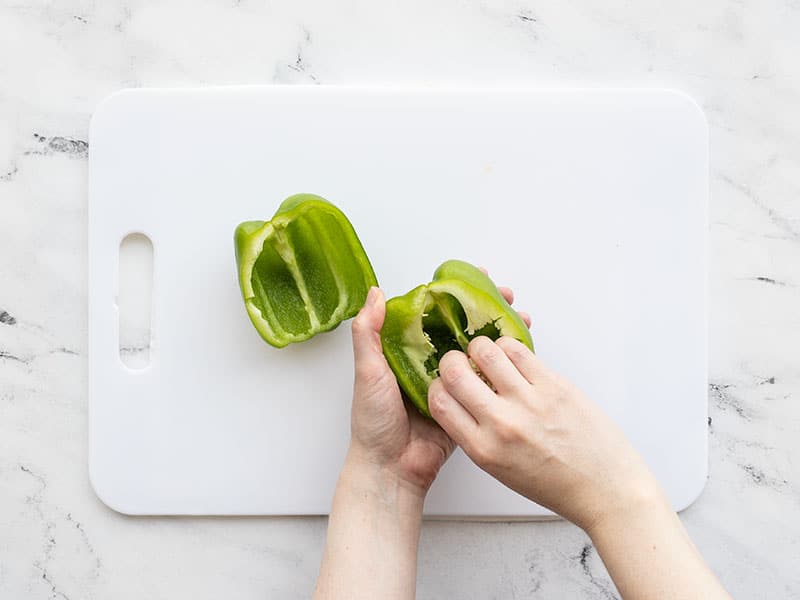
Step 2: Pull the seed pods out of the bell pepper, as long as any excess white flesh.
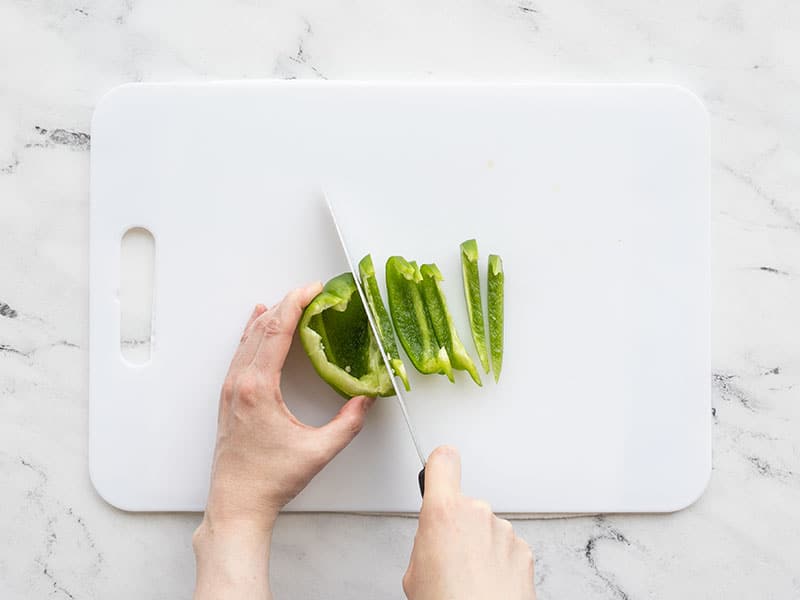
Step 3: With the skin facing down, slice the bell pepper longitudinally (top to bottom). Slicing on this side of the pepper is much easier than slicing the tough skin side, which can cause the knife to slip.
How to Use Sliced Bell Pepper: Sliced bell peppers are great for recipes where you want the pepper pieces to hold up to cooking, like roasting (Easy Oven Fajitas), stir frying (Vegetable Lo Mein), or when you want the pieces to lay flat and stay in place, like sandwiches (Sriracha Chickpea Salad Wraps).
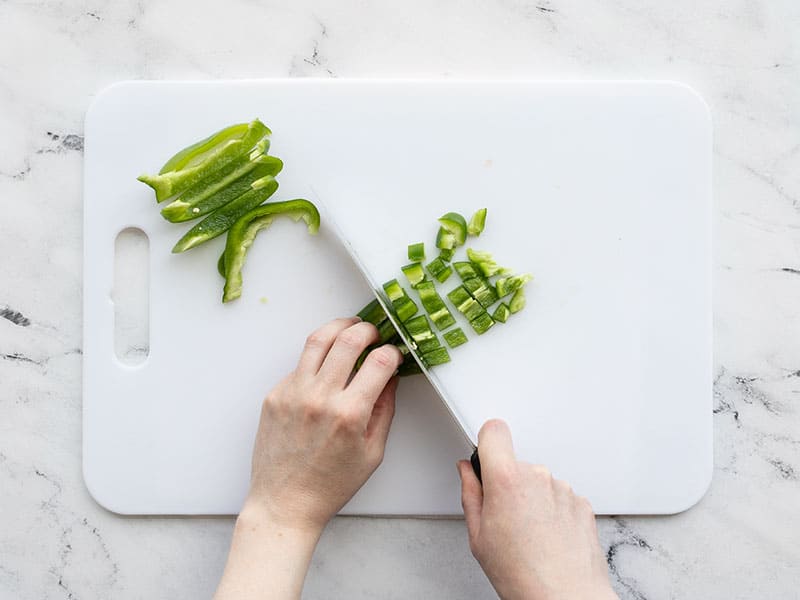
Step 4: To dice the bell pepper, line up a few slices, turn them 90 degrees, then cut across the slices into squares.
How to Use Diced Bell Pepper: Diced bell peppers are great for when you want a distinct crunch, but in bite-sized pieces. They’re great for salads (Sesame Tuna Salad), Stir Fries (Ground Turkey Stir Fry), and soups and stews (One Pot American Goulash).
How to Cut a Sweet Potato
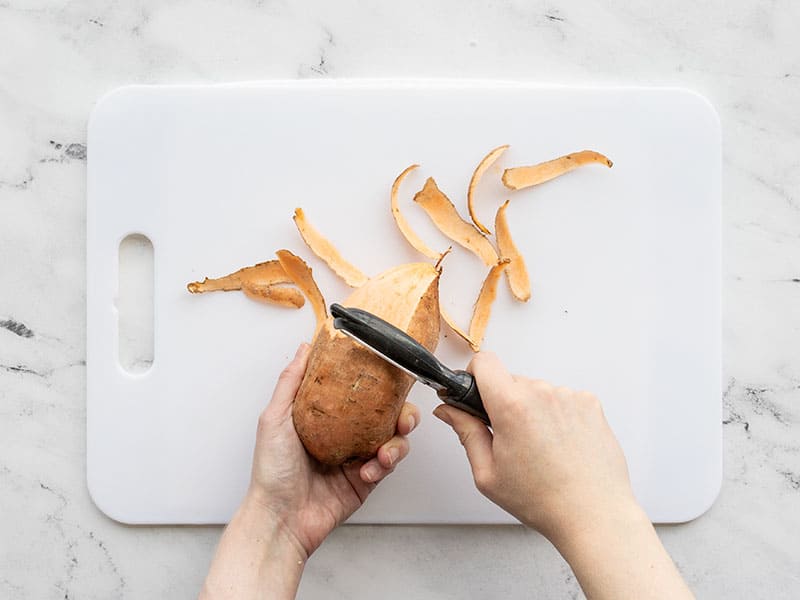
Step 1: Peel the sweet potato.
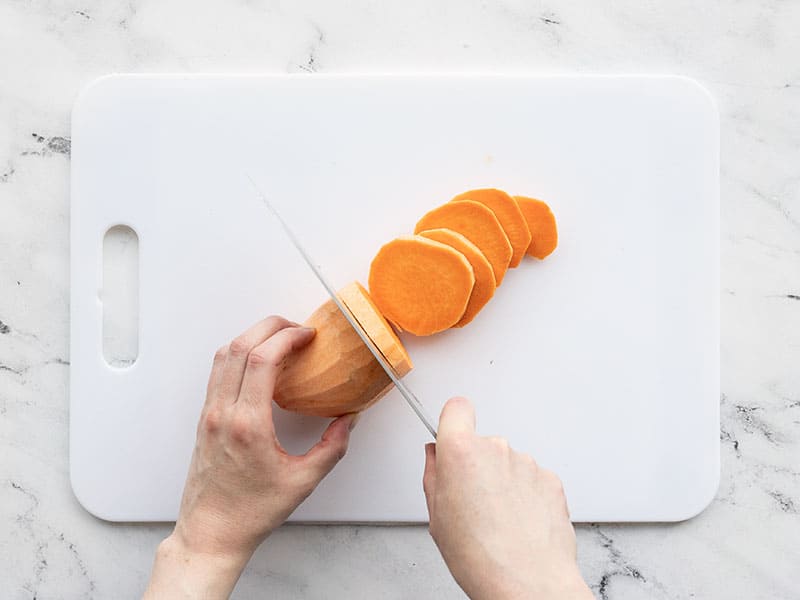
Step 2: Slice the sweet potato into rounds. Remember, keep those finger tips tucked!
How to Use Sliced Sweet Potatoes: Sliced sweet potatoes are good for when you want to display the sweet potato as the main feature of a recipe. Sliced sweet potatoes can be roasted (Smoky Roasted Sweet Potatoes) or baked.
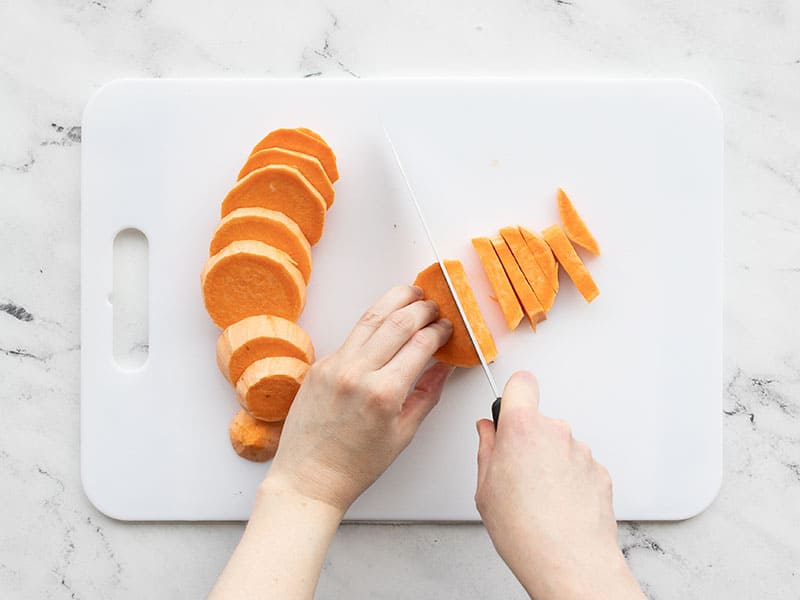
Step 3: To cut the sweet potato into strips (for things like sweet potato fries), stack a few of the sweet potato rounds, then slice into strips.
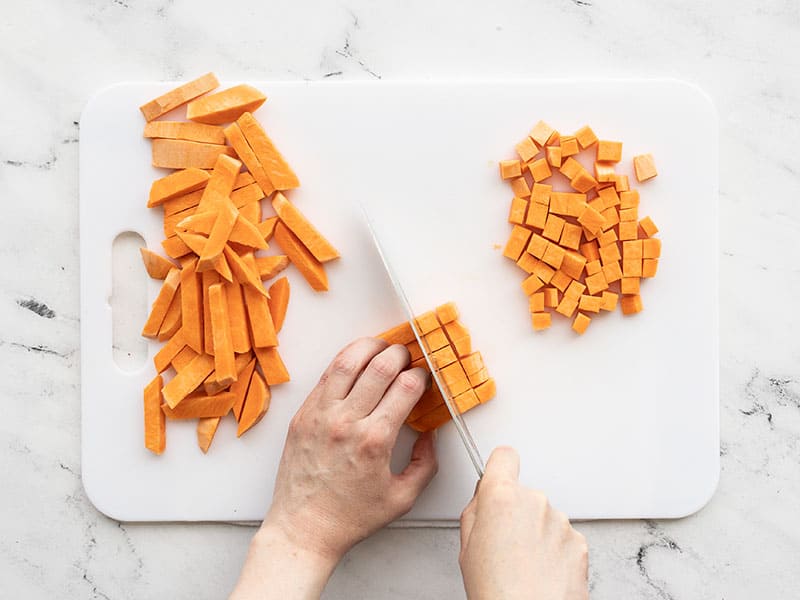
Step 4: To dice the sweet potato, line up a few of the strips, turn 90 degrees, then cut across the slices into cubes.
How to Use Diced Sweet Potato: Diced sweet potatoes cook faster than strips or slices, so they’re great for many different types of dishes. They’re great in soups and stews (West African Peanut Stew), roasting (Maple Roasted Sweet Potatoes), and salads (Roasted Sweet Potato Rainbow Salad).
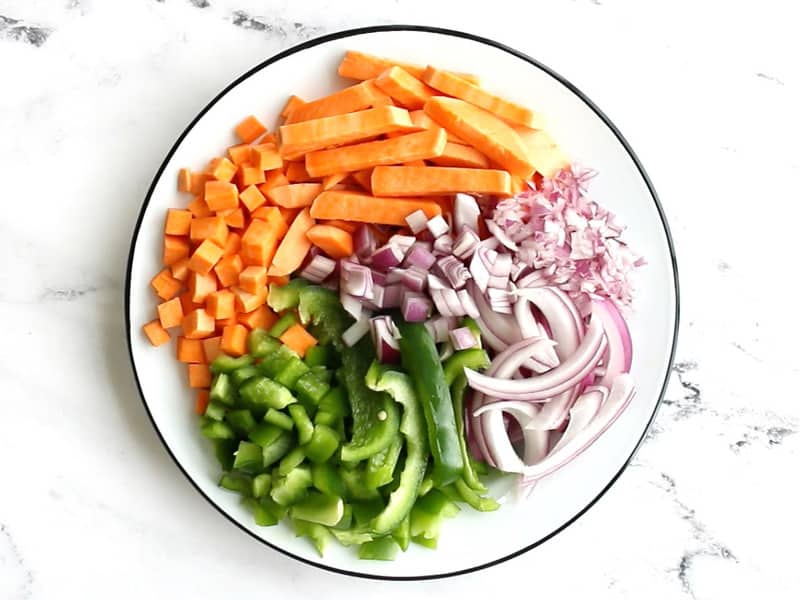


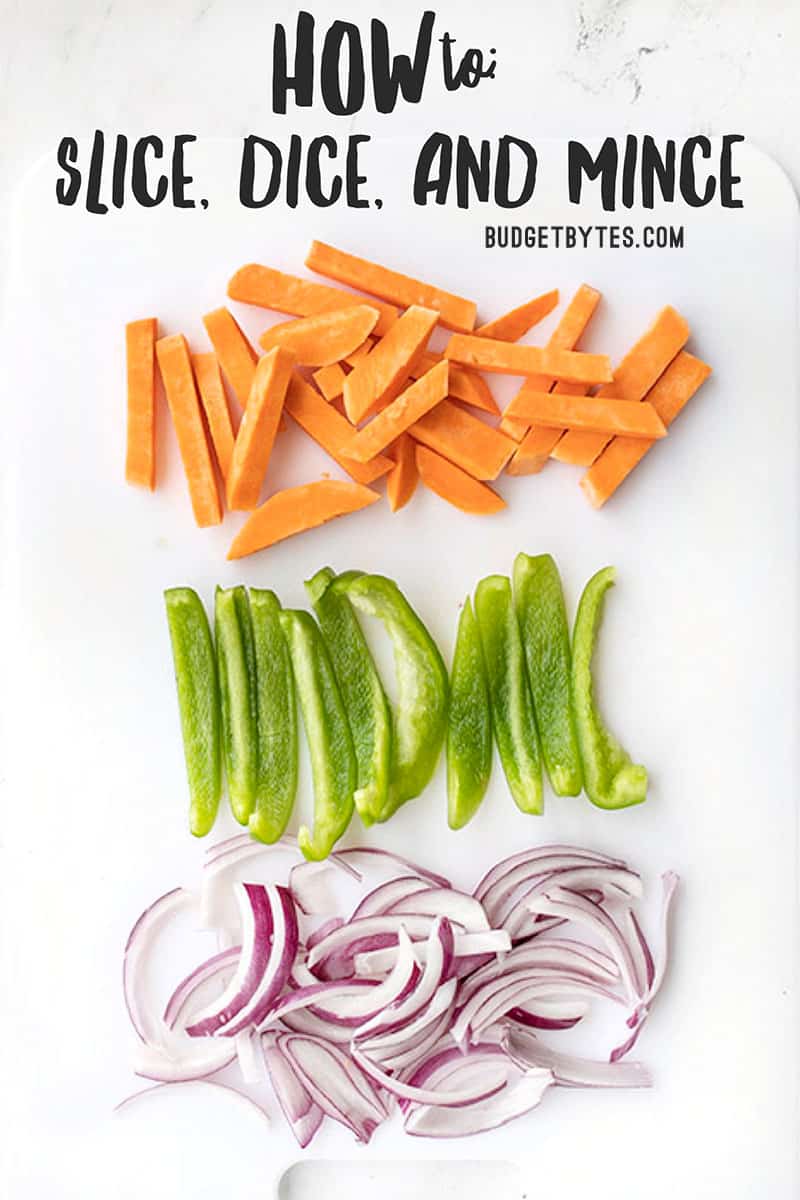
I am 43 years old and finding this How-To section SO helpful! I am clicking on so many of the topics. This is so helpful and is saving me a LOT of YouTube searches. Thank you! I’ve always struggled with cutting veggies in a quick and efficient manner. I’m that person that always makes a 30-minute recipe take 90. Why is this not taught in schools?! There should still be Home Economics in school so that all these kids can learn how to cook something more than a Hot Pocket. Anyhow, THANK YOU for not assuming we had a good grasp of the basics and showing us these things. Next, I’m hoping you have an article on how to tie up a whole chicken for roasting.
If you run the cut side of the onion under cool water for a few seconds, you won’t cry!
When I cut onions I angle a small table fan to blow the fumes away from my eyes. It really works for me.
I learned a while back that the chemicals in onions that react with air to make our eyes water are more highly concentrated at the root end than anywhere else, so leaving the root end intact can help onions be less teary to cut! I usually cut off the non-root end off, then lay the onion on the cut end to cut in half before peeling and slicing/dicing.
ohhhhh beth! you just nailed it. This is such a detailed post which definitely helps beginners. I am loving your blog. Wish I find this website a little bit early.
have a great day ahead!
I really like Isaac Toups’s method for bell peppers. Sit the bell pepper stem up, then slice off the four “walls” going from the top of the pepper down. This leaves you with a sort of convex apple core shape and if you get the right spot for the slice, it should also leave most of the white and seeds in the core. Then you can slice off the top and bottom of the bell pepper and throw out the rest.
I love your method for the sweet potatoes! I’ve always struggled with dicing potatoes and this is definitely a eureka technique for me.
I was going to post this method too! It’s so fast and easy.
I had to go look that up so I could find a video. It does look fast and easy! Thanks!
Missing from this video: the point about halfway through the onion (if I make it that far) where I’m dabbing at my eyes with the shoulder of my shirt (trying not to touch my face because that would be a terrible idea) and/or blinking rapidly trying to get rid of the tears while wrangling sliding onion pieces and holding a sharp knife.
Helpful video overall.
Another way to cut a bell pepper is to slice off the bottom, then run your knife up towards the stem. Slide your knife around the stem. Then you can usually pull out the stem section with the seeds all intact. It’s not perfect and a video will likely help you understand these instructions better. I learned of this recently and it was a game changer for me.
I slice the top and the bottom off, then run my knife around the inside to cut out the core with all the seeds still attached. Much less mess!